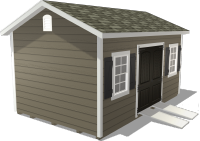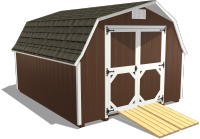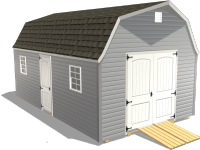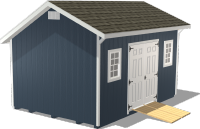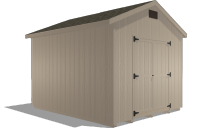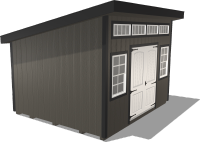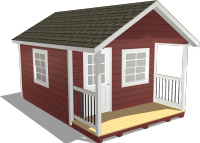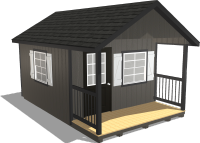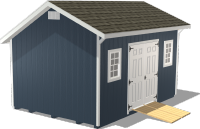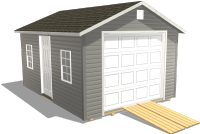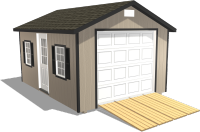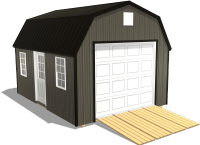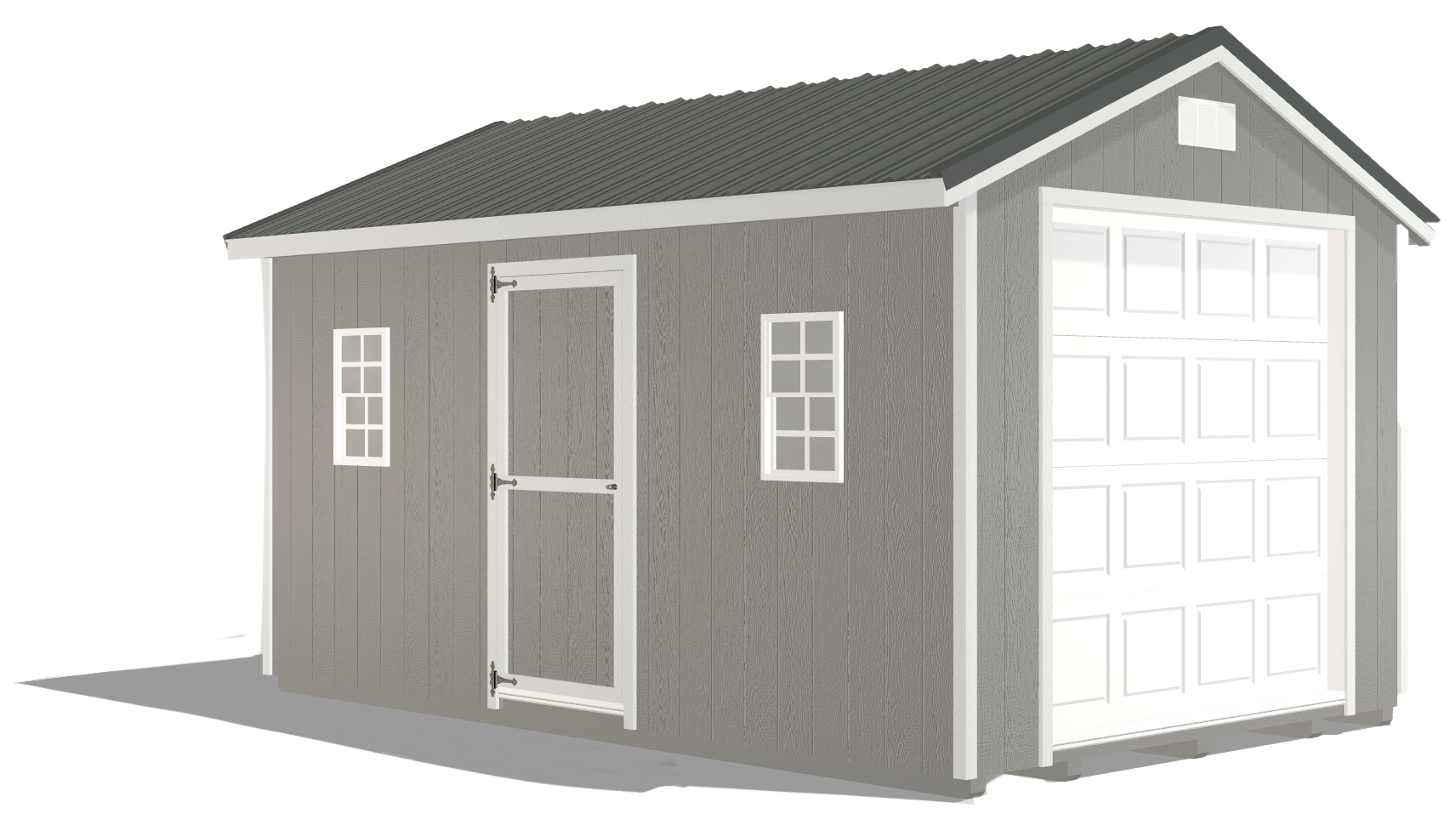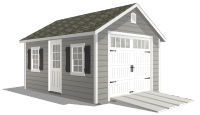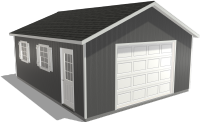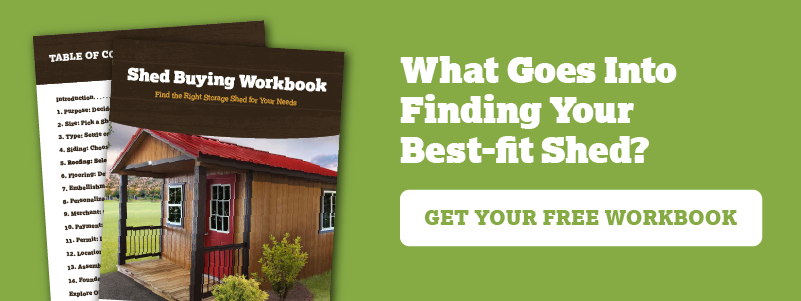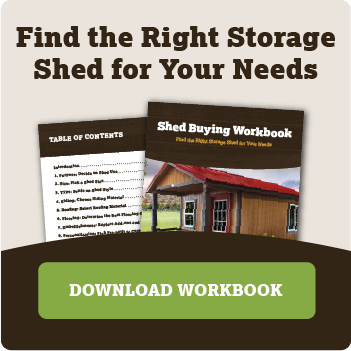Outdoor Storage Sheds: How to Choose, Organize, and Protect Your Space
by Dakota Storage Buildings, on August 20, 2025

When it comes to outdoor storage, it’s easy to focus solely on size. However, while square footage is important, it’s the thoughtful decisions about materials, organization, and security that will ultimately determine your shed's performance.
Properly selecting and organizing your outdoor storage shed will protect your belongings and maximize its functionality and longevity. In this blog, we’ll walk you through essential tips for choosing the right shed materials, organizing efficiently, and securing your space to ensure that your storage is safe, organized, and long-lasting.
What to Avoid Storing in Your Outdoor Shed
Proper storage is crucial to prevent damage and maintain safety. Here are some items you should avoid storing in your outdoor storage shed.
- Perishable Items: Perishable food or other items can spoil and attract pests if they are kept in your shed. Always keep these items in a climate-controlled environment inside your home.
- Flammable Materials: Gasoline, propane, and other flammable substances are a significant fire hazard. Store these items in a designated, well-ventilated area designed for flammable materials.
- Valuable Items: High-value items like jewelry, important documents, and expensive electronics are better kept inside your home to reduce the risk of theft and damage.
- Sensitive Electronics: In a shed, the temperature and humidity changes with the weather outside. This can damage sensitive electronic equipment. Store these items indoors where conditions are more stable.
- Legal Restrictions: Some local regulations may prohibit homeowners from storing certain items in outdoor storage sheds, such as hazardous chemicals or large quantities of specific materials. Always check local guidelines to ensure compliance.
Read more about why these items should not be stored in a shed.
Don’t Make These Outdoor Storage Mistakes
When it comes to outdoor storage, certain mistakes can cause serious issues down the line. Let’s look at some common problems and how you can avoid them to protect both your shed and its contents.

Common Mistakes
- Using Poor Storage Materials: Improper materials, like cardboard or untreated wood, can lead to mold, rot, and damage. Storing fragile items on damp surfaces only accelerates this.
- Overpacking Your Shed: Stuffing your shed to the brim makes it difficult to find what you need, leading to frustration and damage.
- Lack of an Organization System: Without a system, you’ll spend more time searching than organizing.
Prevention Tips
- Use Durable, Weather-Resistant Storage: Switch to plastic bins with tight-fitting lids and elevate items off the ground to avoid moisture damage.
- Don’t Overpack Your Shed: Create space by hanging tools on the wall and using the "12-month rule" to declutter.
- Establish an Organization System: Label bins clearly, group similar items, and use color-coding for easy access.
Learn how to avoid storage mistakes and keep your shed in top shape.
Things Customers Would Do Differently on Their Next Shed Purchase
Learning from past experiences can lead to better decisions for future shed purchases. After talking to some of our previous customers, we found that many of them wished they had chosen a larger outdoor storage shed to accommodate future storage needs.
It is crucial to consider your long-term requirements when selecting a shed size. Material selection is also vital, as different materials offer various benefits depending on the local climate and intended use.
For instance, while metal sheds are durable, they can get extremely hot in sunny climates. Upgrading your shed to have SilverTech’s radiant barrier technology can reduce the sun's radiant energy. This keeps the interior cooler and brighter, making it more suitable for storing items or working inside.

Proper ventilation prevents moisture buildup and extends the life of stored items, while natural lighting can make the shed more functional and pleasant to use. Adding features like windows, double doors, ramps, and strategically placed shelving can significantly improve the usability of your shed, making it easier to access and organize your belongings.
Seeking professional advice or reading reviews can provide valuable insights and help avoid common mistakes. By learning from previous shed-buyers, you can ensure you make an informed decision and choose the best outdoor storage shed for your needs.
See what our customers wished they knew before purchasing their shed.
Pick the Right Materials for a Shed That Lasts
Selecting the right materials for your outdoor storage shed is crucial for its durability, maintenance, and overall performance. Let’s explore some of the most common materials used for sheds and weigh the pros and cons of each.
Wood
Pros: Wood provides a classic, natural look and offers good insulation. It’s easy to customize and can be painted or stained to fit your aesthetic.
Cons: Wood is prone to rot, pests, and weather damage if not properly treated. Regular maintenance, including sealing and painting, is required.
Metal
Pros: Metal sheds are highly durable, fire-resistant, and pest-proof. They can withstand harsh weather conditions and typically require less maintenance than wood.
Cons: Metal sheds can rust over time, especially if not treated or coated. They also don’t offer the same level of insulation as wood or plastic sheds.
Plastic
Pros: Plastic sheds are lightweight, low-maintenance, and resistant to rust and rot. They are often UV-resistant and can withstand various weather conditions.
Cons: Plastic sheds may not provide the same strength as metal or wood and may not be suitable for heavy-duty storage needs.
Composite
Pros: Composite materials combine the strength of wood and the low-maintenance properties of plastic. They are durable and resistant to pests and weather damage.
Cons: Composite sheds can be more expensive than other materials, and not all types are entirely maintenance-free.

Mixing Materials for Maximum Durability
Mixing materials can offer the best of both worlds when it comes to durability and low-maintenance upkeep. For example, combining a metal roof with wooden walls creates a sturdy, weather-resistant structure that stands up to the elements.
Using composite siding with treated wood floors provides a durable option that minimizes maintenance needs while maintaining strength and resilience. A combination of materials ensures your outdoor storage shed remains functional and long-lasting, no matter the conditions.
Dive deeper into shed materials and learn how to choose the right one for your needs.
Is Plastic a Viable Material Option for Sturdy Sheds?
Plastic sheds have become a popular option for many homeowners. These outdoor storage sheds are resistant to rust, rot, and insect damage, making them ideal for different climates.
However, they may not withstand extreme weather conditions as well as metal or wood sheds, which can compromise their durability in the long run. Although maintenance and upkeep are straightforward, plastic sheds may not provide the same level of security and durability needed for heavier equipment or long-term storage.
Plastic sheds are typically more affordable than wood or metal options. However, despite some high-quality models being relatively sturdy, plastic sheds are generally better suited for lighter items such as gardening tools and bicycles.
If you are seeking a storage solution that offers superior durability, shed security, and longevity, investing in stronger materials like metal or wood is recommended to ensure the best performance over time.
Discover if plastic is the right material for your backyard shed.
Lay the Groundwork for Your Shed With the Right Foundation
A solid foundation is critical for the longevity of your shed. Before purchasing a shed, you must consider the type of foundation that will create the base for your outdoor storage shed. Each option offers specific benefits depending on your needs and environment.
- Concrete Slabs: Concrete provides excellent protection against pests and moisture. To install a concrete foundation, you must excavate the area, install formwork, pour and level the concrete, and allow it to cure properly.
- Gravel Pads: Known for good drainage and ease of installation, gravel pads are a cost-effective option. Installing gravel requires you to excavate the area, lay down landscape fabric, fill the area with gravel, and then level and compact the gravel.

Preparing Your Shed Site
Proper site preparation is essential for a solid shed foundation. To choose the right area, you must consider natural drainage and sunlight. Clear the area of any vegetation, level the ground, and add a layer of landscape fabric for extra protection. This preparation helps prevent future issues with vegetation growth and moisture accumulation under the shed.
Essential Foundation Maintenance
Regular maintenance ensures the longevity of your shed’s foundation. Conduct regular inspections to check for signs of wear, damage, or settling, and use a level to ensure the foundation remains even.
Keep the area around the outdoor storage shed clear of debris such as leaves and dirt to prevent moisture buildup and potential damage. Address any issues promptly to maintain the foundation’s structural integrity and prevent further damage.
Explore strategies to build a strong shed foundation.
Essential Tips for Keeping Your Tools and Gear Safe
Sheds are often filled with valuable tools, gardening supplies, and equipment, making them prime targets for theft. To keep your items safe, it’s important to invest in a solid security system and implement preventive measures.
Why Sheds Are Easy Targets for Burglars
Sheds are often located in isolated areas of the backyard or hidden from view, making them prime targets for burglars. Many sheds come equipped with basic locks that are easy to bypass, leaving valuable tools and equipment vulnerable to theft.
Unfortunately, homeowners often overlook the importance of securing their sheds, assuming that a locked door or a fence is enough to keep their belongings safe. This lack of attention to shed security can put their tools and other assets at risk.
The Best Security Features for Your Outdoor Storage Shed
- Smart Locks: Keyless entry systems with remote access allow you to control who has access to your shed, even when you’re not home.
- Motion Sensors and Cameras: Set up motion-activated lights and cameras to deter burglars and catch suspicious activity.
- Alarm Systems: A simple alarm can alert you or the authorities if someone tries to break in.
- Lockboxes: Use lockboxes inside your shed to store valuable items like tools and small equipment.
- Organized Tool Storage: Keep tools off the floor and locked up. Using wall-mounted storage or lockable cabinets can reduce theft risks.
- Strategic Placement: Position your shed in a well-lit area with clear sightlines to discourage thieves. Consider adding signage indicating that your shed is secured with cameras or alarms.
Read more tips on securing your outdoor storage shed and keeping your tools safe.
Protect Your Snowmobiles and ATVs With a Storage Shed
Properly storing recreational vehicles is essential to maintain their condition and value. Selecting the right shed size and features is crucial. Ensure the outdoor storage shed is large enough to comfortably accommodate your vehicles and look for features like wide doors and ramps for easy access.
Additional shed security measures like locks and alarm systems can help secure your vehicles and deter theft, ensuring they remain safe and in good condition.

Preventing moisture and rust is also vital for maintaining your vehicles. Adding protective flooring and anchors can prevent moisture from damaging your vehicles and keep them secure, preventing any unwanted movement. Use moisture absorbers and ensure proper ventilation to avoid rust and mildew. Regularly check for signs of moisture and address any issues promptly.
Before storing your vehicles for the season, clean them thoroughly, check for any repairs needed, and cover them with protective tarps.
Learn how to properly store recreational vehicles in a garage shed.
Make Your Shed Work for You
Great shed performance isn’t just about how it’s built; it’s about how you plan, organize, and maintain your space. Taking the time to consider the materials, layout, and security features of your shed will ensure it remains functional and secure for years to come. Whether you’re protecting your tools from the elements or organizing seasonal gear, a little thoughtfulness up front can save you time and money in the long run.
Take inventory of your current outdoor storage shed setup and make one improvement today. If you don’t have a shed yet, check out our Shed Buying Workbook to get started on choosing the right one for your needs.



